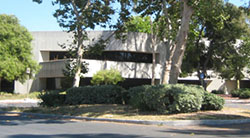
2018 will see many challenges in the field of education, from Pre-school to Post-college, from public to private to charter-school choice, from academic to social and emotional development, and from engineering and math to liberal arts. Everything is being looked at and challenged, and in a new age of political change and educational leadership, decisions made in 2018 will have a lasting effect on U.S. education for many years to come.
Here are just a few of the issues facing educators, corporate leaders and political influencers in 2018 and beyond.
Continue to Invest & Support STEM/STEAM
Educational technology is becoming increasingly important to our future. Robots are expected to replace up to 38 percent of jobs in the U.S. over the next 15 years. Students need to be prepared to succeed in a digital world when they enter the workforce. And training them is starting as early as kindergarten-age.
Educational technology and Investment in the U.S., K–12 school systems increased fourfold from 2010 to 2015, based on innovations in digital product offerings and mobile communications technologies
In 2016, things slowed down significantly with investments in K–12 ed tech dropping by 40 percent. Last year, in 2017, there were indications that emerging technologies such as artificial intelligence, augmented and virtual reality, machine learning, and personal learning that are creating new opportunities for students to choose learning styles and accelerate learning growth.
Progressive classrooms are now equipped with Chromebooks and Google educational apps, part of Google’s recent $1 billion pledge over the next five years to help train Americans for jobs in technology.
Called Grow with Google, the program is designed to affect a wide audience including teachers, students, local businesses, job seekers, developers and startups and to provide online training initiatives and programs.
Ed tech will target areas like science, technology, engineering, and mathematics (STEM). The “makerspace movement” will continue to grow in U.S. schools, enabling students to actively design, experiment, build and invent as they engage in STEM subjects.
It’s a movement that has a $2 million funding from the U.S. government. And it’s already active in other countries like China, where 5,000 new maker spaces have opened last year.
While finding ways to empower students in the STEM subjects, it will also be a challenge for educators to include the arts in core curriculums. Liberal arts like reading and language should continue to be part of a well-rounded education and should not be lost in the mad dash for technology. STEM will be changing to STEAM with the inclusion of “A” for “arts + design.”
Continue to Develop Career & Technical Education (CTE) Paths
With the increasing attention being paid to technology, there is a growing need for children to learn all they can about it before they will be asked to enter the workforce with a full knowledge of what technology means and offers in the field they choose.
In addition to colleges and universities, with high costs of tuition and entrance limitations, there have to be alternate ways to prepare. In 2017, the U.S. House of Representatives re-authorized the Perkins Act, providing funding for career and technical education. The bill is stalled in the Senate, but the hope is it will be passed to help students prepare for good paying jobs that don’t require traditional four-year degrees.
Also, ten states are already working to connect their CTE systems to jobs available in their states. The effort is called the New Skills for Youth project. The aim of CTE initiatives is to prepare students for tomorrow’s jobs and economy. It is estimated that technology and automation will cause massive shifts in the jobs sector, with nearly 40 percent of U.S. jobs being affected by the year 2030.
Preparing students for this seismic change can’t begin too early. Today’s kindergarteners are the graduating class of 2030, so it is appropriate to introduce them to these ideas as soon as possible.
The government has shown an interest in supporting this effort. But it will take more to get the job done – educational entrepreneurs, nonprofits and businessmen and women, working in partnerships and funding initiatives.
Working together, these resources can create an educational landscape that allows all high school students a choice of educational and career training options that will give them the skills they need and the experience they need to enter the job market of tomorrow on their own terms.
Create Increased Focus on Social-Emotional Learning (SEL)
Educational technology is great. Kids get on mobile devices and have access to more digital information than ever before. But there is a downside. It dehumanizes the classroom – and the living room, and the dining room. Kids get so immersed that they ignore social interaction altogether.
And while academic learning is fundamental to their development, kids also need to establish additional mindsets, habits, skills, and attitudes to be successful in the long run, to be successful in life. There is a new federal education law (ESSA) that provides rules for expanding the measurement of school success to include social-emotional learning (SEL).
Organizations such as CASEL (Collaborative for Academic, Social, and Emotional Learning) have been working in this area for years, but there still needs to be a consensus on which SEL skills are the most important.
SEL is not just one program. It is a process that is central to how schools, families, and communities place value and offer support to the social, emotional, and academic development of their children.
This collaborative effort will also help gifted and talented children be more socially welcomed into the school community and help other children understand their special gifts as well as unique challenges.
2018 holds great promise for education in America. We are learning more about technology in schools, and technology is helping us learn. In our concentrated efforts to keep the reins on it, we can’t forget about liberal arts, language, and person-to-person communications.
We have to support our universities but also provide other channels of career development. School choice doesn’t stop with the early grades. And we can’t forget about the edges of the school population where the gifted and talented students have the same need for social and emotional development as other students – they all can benefit from learning the life skills and behaviors that will make them successful long-term.






